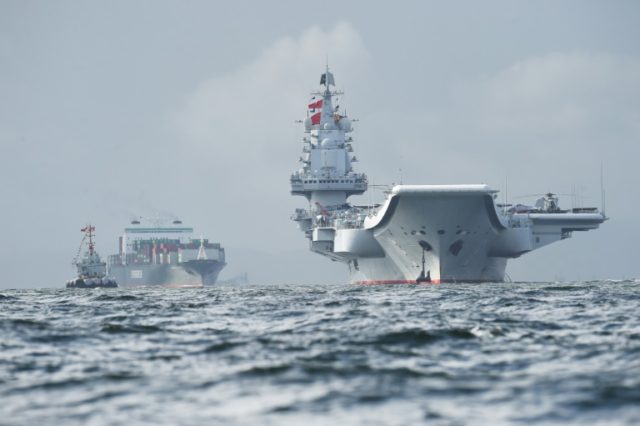China’s first domestically produced aircraft carrier, which has not been given an official name yet, began sea trials on Sunday morning.
The new ship is seen as a development platform that will give China the expertise to develop even more advanced carriers that can compete with the U.S. Navy and bring China closer to its goal of developing a world-class blue-water navy.
China’s existing aircraft carrier, the Liaoning, is a refurbished Soviet ship from the 1990s that went into service as a training platform for the Chinese navy in 2012. The Liaoning was declared combat-ready in 2016 and has recently taken part in high-profile naval drills intended to demonstrate China’s force-projection capabilities and intimidate adversaries such as Taiwan.
Both the Liaoning and the new carrier are much smaller and less sophisticated than the latest generation of American carriers, but research conducted on the Liaoning is said to have resulted in great technological improvements on the new ship, and a third carrier is rumored to be under construction in Shanghai that will be considerably larger than China’s first two ships and closer to U.S. capabilities.
The Liaoning can carry 24 aircraft, the new ship can handle 30 to 36, and the third carrier will be able to carry 40 or more. U.S. carriers usually sail with over 60 planes and can carry over 90 if necessary. The second Chinese carrier still employs the “ski slope” approach to launching planes, a ramp tilted upward on the bow of the ship, while the third will reportedly have electromagnetic catapults comparable to American technology. Using catapults allows carriers to launch a wider variety of aircraft with heavier loads of fuel and munitions.
Each new Chinese carrier also boasts improved sensory equipment, air defenses, and crew support facilities that will allow the ships to operate at sea for longer. China’s carriers are not yet nuclear-powered like American carriers.
The South China Morning Post quotes China Shipbuilding Industry Corporation Chairman Hu Wenming stating that 70 percent of the companies involved in building the second carrier were civilian corporations.
“We have already developed a team of experts in the research, design, and construction [of aircraft carriers], and their average age is just 36. In the future, if the country wants to develop any type of aircraft carrier, we have the capability to do it,” said Hu.
“Even though there’s a gap now between the new aircraft carrier and the most advanced one in the world, China will speed up on shipbuilding and narrow the gap … we will build a large carrier in the future,” Beijing-based naval expert Li Jie told the SCMP.
Sea trials for the new Chinese carrier are expected to last about a year, with an eye toward making the ship combat-ready by 2020. Aircraft carriers are extraordinarily complex vessels, so their sea trials often reveal serious problems that can substantially delay full deployment. Chinese officials said the first order of business for the new carrier will be testing its propulsion and power systems.
“The U.S. Navy and the capability for the U.S. Navy will still be superior to the Chinese Navy in 10 years, but the size of the Chinese fleet will be larger and they’ll have closed the gap in technology and training,” political science professor Robert Ross of Boston College told CNN on Sunday.
“If you look at China’s acquisitions of facilities in the Indian Ocean and in Eastern Africa, they’re quickly developing the capability to maintain a naval presence in distant waters,” he added.

COMMENTS
Please let us know if you're having issues with commenting.